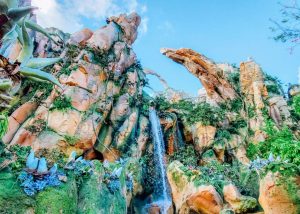Assessing the Difficulty of Climbing Kilimanjaro
Embarking on a journey to climb Mount Kilimanjaro is a dream for many avid adventurers. As the highest peak in Africa, standing at 19,341 feet tall, Kilimanjaro presents a unique set of challenges that climbers must be prepared to face. While it is a non-technical climb, the altitude and unpredictable weather conditions make it a formidable feat. Understanding the difficulties associated with climbing Kilimanjaro and evaluating the factors that contribute to its difficulty are crucial for those considering this adventure.
Understanding the Challenges of Climbing Kilimanjaro
One of the main challenges of climbing Kilimanjaro is the altitude. As climbers ascend the mountain, they may experience symptoms of altitude sickness, including headaches, nausea, and fatigue. Proper acclimatization is essential to minimize the risk of altitude-related issues. Additionally, the unpredictable weather on Kilimanjaro can pose a significant challenge. Climbers may encounter rain, snow, and high winds, making the ascent more demanding.
The varying terrain on Kilimanjaro also adds to the difficulty of the climb. Climbers will traverse through a range of landscapes, from lush rainforests to barren alpine deserts, before reaching the snowy summit. The physical demands of hiking long distances at high altitudes can be taxing on the body, requiring strength, endurance, and mental fortitude.
Factors to Consider When Evaluating Difficulty Levels
When evaluating the difficulty of climbing Kilimanjaro, there are several factors to consider:
Physical Fitness
Climbers should be in good physical condition before attempting to climb Kilimanjaro. Regular cardiovascular exercise, strength training, and hiking experience are essential for tackling the mountain’s challenging terrain.
Altitude Acclimatization
Proper acclimatization is key to a successful Kilimanjaro climb. Climbers should choose a route that allows for gradual ascent and includes sufficient rest days to adjust to the altitude.
Weather Conditions
The weather on Kilimanjaro can be unpredictable, with temperatures ranging from hot to freezing cold. Climbers must be prepared for all types of weather conditions and pack appropriate gear to stay warm and dry.
Mental Preparation
Climbing Kilimanjaro is not just a physical challenge but a mental one as well. Climbers must be mentally prepared to push through fatigue, discomfort, and doubts to reach the summit.
Professional Guidance
For those looking to climb Kilimanjaro, booking a tour with a reputable company like Sunset Africa Safari is recommended. Their experienced guides can provide valuable support and expertise throughout the climb, increasing the chances of a successful summit.
In conclusion, assessing the difficulty of climbing Kilimanjaro requires careful consideration of various factors, including physical fitness, altitude acclimatization, weather conditions, mental preparation, and professional guidance. With proper preparation and determination, climbers can conquer this iconic peak and experience the adventure of a lifetime. For booking requests and more information on climbing Kilimanjaro with Sunset Africa Safari, please contact info@sunsetafricasafari.com.


